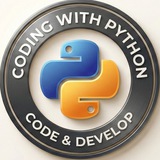💡 Python
This guide covers Python's boolean values,
• Comparison Operators: Operators like
• Logical
• Logical
• Logical
• Truthiness: In a boolean context (like an
• Falsiness: Only a few specific values are
• Internally,
• This allows you to use them in mathematical calculations, a common feature in coding challenges.
#Python #Boolean #Programming #TrueFalse #CodingTips
━━━━━━━━━━━━━━━
By: @DataScience4 ✨
True & False: A Mini-GuideThis guide covers Python's boolean values,
True and False. We'll explore how they result from comparisons, are used with logical operators, and how other data types can be evaluated as "truthy" or "falsy".x = 10
y = 5
print(x > y)
print(x == 10)
print(y != 5)
# Output:
# True
# True
# False
• Comparison Operators: Operators like
>, ==, and != evaluate expressions and always return a boolean value: True or False.is_sunny = True
is_warm = False
print(is_sunny and is_warm)
print(is_sunny or is_warm)
print(not is_warm)
# Output:
# False
# True
# True
• Logical
and: Returns True only if both operands are true.• Logical
or: Returns True if at least one operand is true.• Logical
not: Inverts the boolean value (True becomes False, and vice-versa).# "Falsy" values evaluate to False
print(bool(0))
print(bool(""))
print(bool([]))
print(bool(None))
# "Truthy" values evaluate to True
print(bool(42))
print(bool("hello"))
# Output:
# False
# False
# False
# False
# True
# True
• Truthiness: In a boolean context (like an
if statement), many values are considered True ("truthy").• Falsiness: Only a few specific values are
False ("falsy"): 0, None, and any empty collection (e.g., "", [], {}).# Booleans can be treated as integers
sum_result = True + True + False
print(sum_result)
product = True * 15
print(product)
# Output:
# 2
# 15
• Internally,
True is equivalent to the integer 1 and False is equivalent to 0.• This allows you to use them in mathematical calculations, a common feature in coding challenges.
#Python #Boolean #Programming #TrueFalse #CodingTips
━━━━━━━━━━━━━━━
By: @DataScience4 ✨
